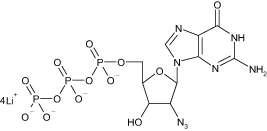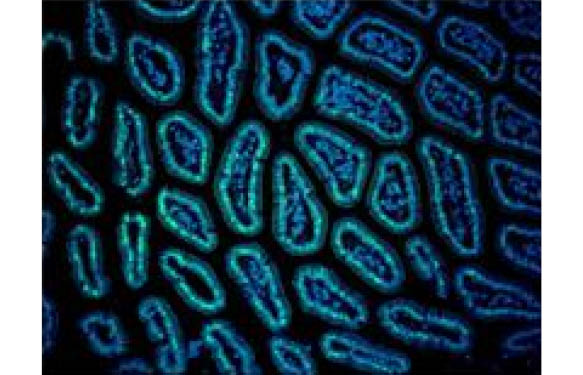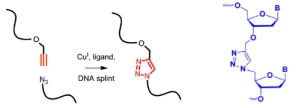A few months ago I read a very nice blog post from our friends at TriLink Biotechnologies giving the chemist’s perspective on the excitement surrounding “Click Chemistry” and how it can be used to make non-natural, yet functional DNA and RNA. Some of the terms in that post such as 1,3-dipolar cycloaddition are oriented more towards chemists. Here’s a more biologist-friendly explanation of Click Chemistry:
Click Chemistry (What is it?)
As a general term, Click Chemistry refers to a process whereby new molecules can be formed quickly an reliably based on the way two chemical moieties react. The most popular reaction seems to be the reaction between molecules called azides with molecules called alkynes to give cyclic triazoles. Cell biologists are familiar with sodium azide (NaN3) for example, because they add it to their western blot primary antibodies to prevent growth of microorganisms, so they can spot the three nitrogens on the left side of this reaction:
This particular reaction becomes very efficient in the presence of copper ions, a discovery from K. Barry Sharpless who first started using the term “Click Chemistry”(Ref).
What does this have to do with Biology?
It turns out that DNA fragments with a 3’-alkyne can be joined to DNA fragments with a 5’-azido by this same azide-alkyne reaction and that this non-natural DNA can be amplified by polymerases and transcribed in vivo (Ref). The synthetic biology world can then use click chemistry to join together large fragments of synthetic DNA and RNA.
Other uses of Click Chemistry technology involve the remarkable ability of cells to incorporate modified bases into functional DNA and RNA strands. A modified thymidine called 5-Ethynyl-2′-deoxyuridine (EdU) can be used for example to replace BrdU in cell proliferation assays. EdU incorporated into DNA can then be detected using fluorescent azide molecules replacing the need for antibody-based detection of BrdU to monitor DNA synthesis rates. Similarly, 5-ethynyl uridine (EU) can be used for monitoring rates of RNA synthesis.
Click Chemistry Kits for Biologists
Commercially available kits incorporating this technology include the iClick™ EdU Andy Fluor™ Kits for cell proliferation and the iClick™ EU Andy Fluor™ Kits for monitoring RNA synthesis. The complete kits supply buffers, EdU or EU, Andy Fluor™ azide, CuSO4 to catalyze the reaction and Hoechst 33342. Visually then, with the iClick™ EdU Andy Fluor™ 594 kit one would be able to distinguish cells that had produced DNA during the two-hour EdU incubation period:

Of course these protocols are adaptable to flow cytometry and interestingly, these modified nucleic acids can be used for in vivo applications as well:

Availability of modified NTPs
Biologists who understand how easy it is to use Click Chemistry can think of some innovative protocols wherein DNA or RNA NTPs are replaced with alkyne modified bases. Unfortunately, 2′-alkynyl NTPs are not commonly available, so the idea of incorporating these modified bases into DNA or RNA and then using Click Chemisry with an azide-coupled fluorophore might not be the best strategy. The reverse strategy is recommended however by the experts at TriLink Biotechnologies (The Modified Nucleic Acid Experts). Azido-functionalized analogs, such as 2′-azido nucleoside triphosphates (Cat. nr N-1028, N-1029, N-1045, and N-1063) can be used for in vitro transcription using T7 R&DNA™ Polymerase from Epicentre (an Illumina Company). A fluorescent probe with a terminal alkyne such as 5-FAM Alkyne could then be used to fluorescently label the chemically-modified RNA. Similarly, the azide modified DNA bases are available such as 2′-Azido-2′-deoxyguanosine-5′-Triphosphate (2′-Azido-dGTP):


TriLink Biotechnologies offers an entire range of sugar-modified nucleoside triphosphates useful for protocols including Click Chemistry.
Leave a message below for more information.





